How is your plumbing? I’m not asking if you are regular or not. This is a question about whether your water lines and drain pipes are in good working order. We don’t often give our plumbing much thought unless there is a problem. If you are having issues under your sink with standing water or mildew, it may be a leaking pipe.
Water comes in and out of your home, and under your sink, you have both lines. Because of this, you may develop a leak in several places so do some investigative work to see where the water is coming from. If it leaks only when the water is running, it could be from the drain pipe or sink. If it drips constantly, the water supply may be the issue. Once you identify the source, a plumber go about fixing it.
Here is how to fix a leaking pipe under your sink.
Tighten Loose Connections
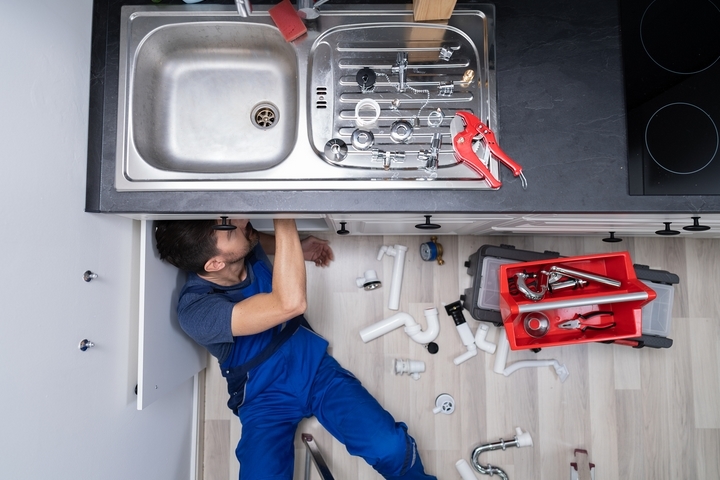
This is a common cause of leaks and doesn’t require any major repair or replacement. Feel around every connection from the hot and cold water coming into the waste water draining out. Coupling nuts connect the drain pipe at the P trap, and you can hand tighten these or use a wrench to stop the leak. For water lines, you can also use a wrench to tighten the compression nut to stop any leak.
Hopefully, this solves your problem, but if not, turn off the water supply and undo the nuts. You can wrap plumbers tape around the pipe’s threads at the connections to make a water-tight seal and put it back together, turning on your water to see if it is resolved.
Plumbers Putty Over Cracks and Holes
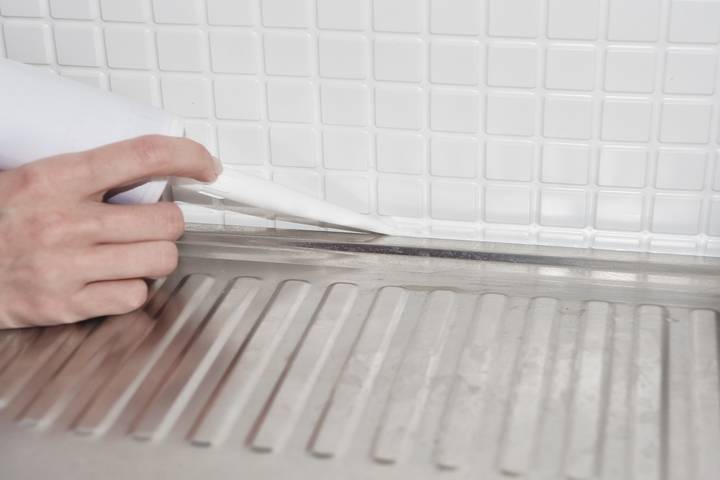
If you have a crack or hole in your pipes, you need to fix it fast, even at night. You may not be able to get all the parts right away, but you can use an effective temporary fix until the next day with pipe putty. This is designed to fill cracks and holes and hardens at room temperature to stop the leak.
Turn off your water and dry the area of the pipe you need to patch so the putty will adhere properly. Use enough putty to fully cover the crack or hole and let it cure according to the manufacturer’s instructions on the product. Then you can safely turn your water back on. Check to make sure it is holding before walking away, and remember, this is only a temporary fix, so make repairs as soon as possible.
Patch and Clamps for Larger Ruptures
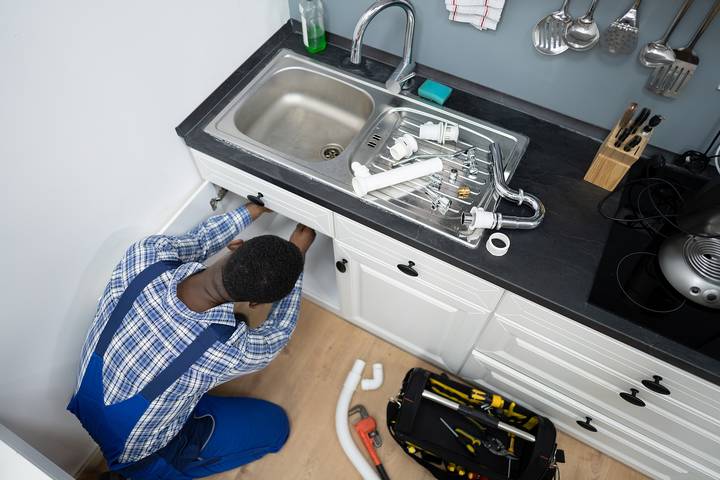
This is another temporary solution when you have a larger crack that has a steady leak. It consists of a rubber patch that wraps around the pipe to fully cover it and clamps to seal the rupture tight. Make sure the patch fits without overlapping or won’t seal properly. Now you can put your clamps over the patch and use a screwdriver to tighten them on the patch to make a firm seal. Turn your water back on and check for drips or moisture around the patch.
Drain Seal
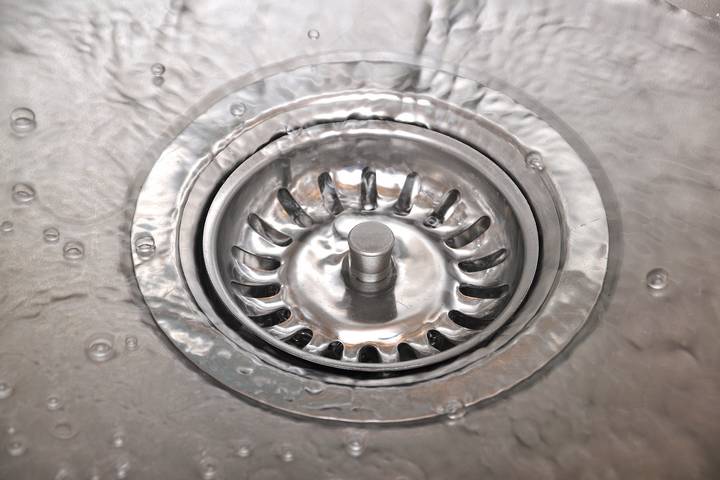
If the leak is coming from the drain, you will see the leak when the bowl has water in it. You can pull up the drain with pliers and apply some new adhesive for a bare drain or replace the seal if necessary. This flange needs to have enough putty to form a seal, but any excess putty should be wiped away from the flange.
Drain Tailpipe
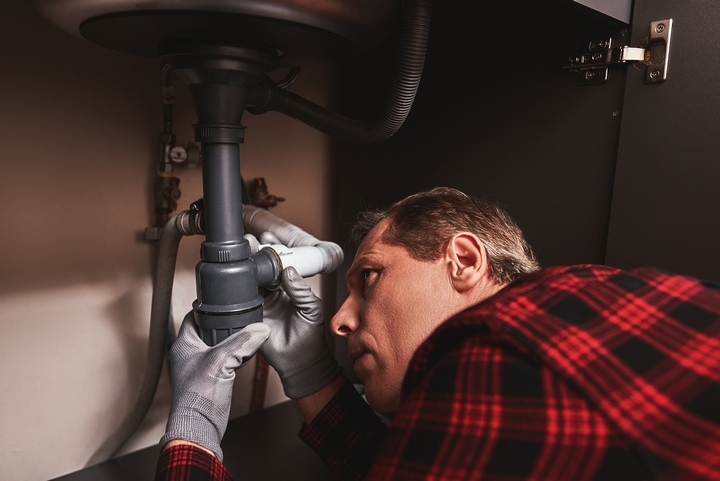
From the sink to the piping, there is a tailpiece that is a straight pipe connecting the bottom of the sink basket to the sink drain fitting and neatly slips inside it. It has a slip joint connecting nuts to tighten to the drain pipe. It too can be cracked, so you will have to unscrew it and replace it with a new one if damaged.
Drain Pipe
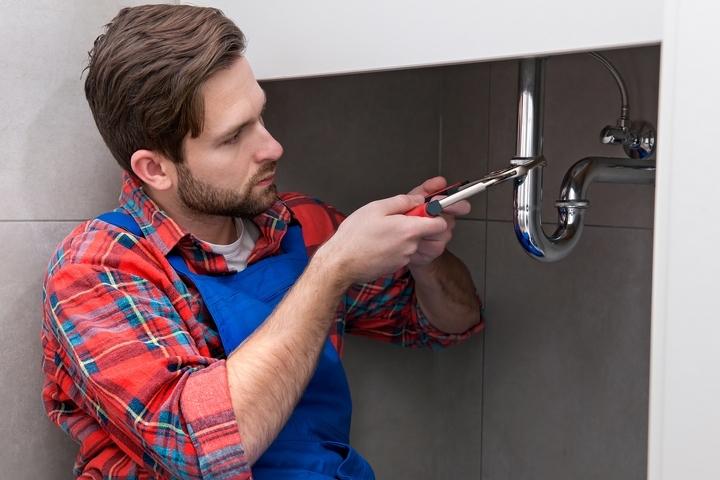
Further down the line is your P trap. While this may just be a case of tightening the connection, it could be corroded or clogged and cause a leak. Grab a shallow bucket under the pipe and unscrew the connection to clear any blockages you can see. If the pipe is corroded or cracked, it will need to be replaced. Take it to a home improvement store to try and match it up with a new one.
Fixing a leaking pipe under your sink is not an easy task. Follow these steps or hire a qualified plumber to tackle it for you. They have the skills to get it done fast so you can get back to running your water again, leak-free.




